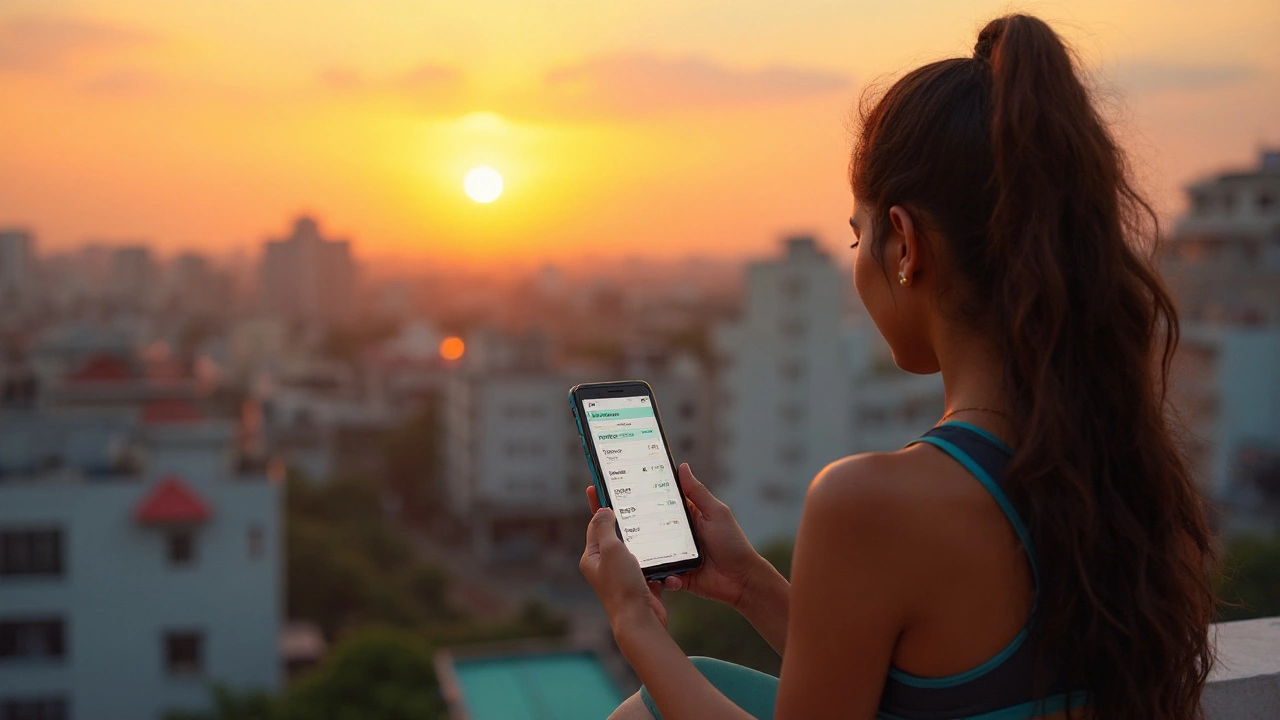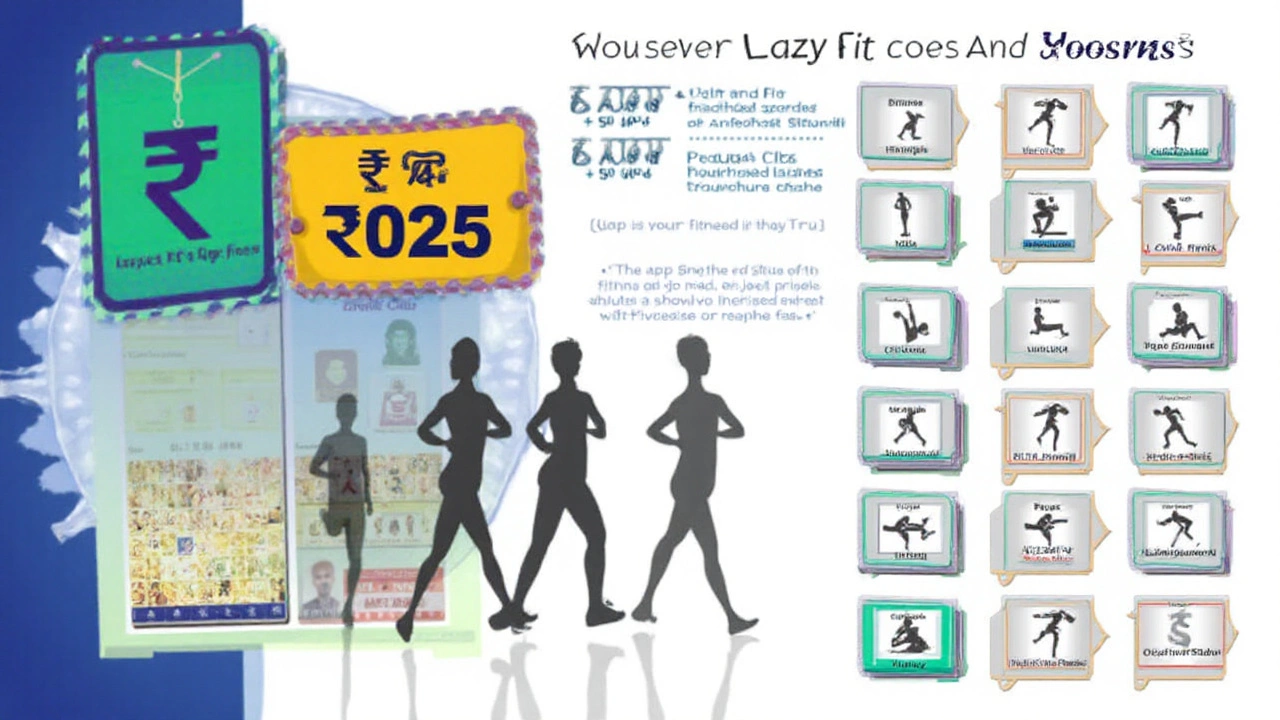Lazy Fit App Cost and Pricing: Honest Breakdown & Tips for 2025
 Aug, 7 2025
Aug, 7 2025
Think all those fitness apps cost an arm and a leg? Not always. Some are sneaky about fees, yes, but Lazy Fit actually spells things out if you look past the shiny ads. If you’re tired of guessing what you’ll pay or getting hit with a surprise charge a week after downloading, you’ll want the real numbers. I dug through the fine print, tested each option, and made a few mistakes (don’t skip the free trial terms—ask me how I know). So, whether you want free features or the full shebang, here’s what you should actually budget for in 2025.
What Do You Get With Lazy Fit’s Free Version?
It’s tempting to think "free" means worthless, but you’ll be surprised by what Lazy Fit gives you before you pay a dollar. With just the base download, you get access to a grab bag of beginner workouts, some handy fitness tips, and a calendar to track activity. Want to set a goal or schedule sessions? That’s all in there for free users. There’s no cap on how long you can use this, and you won’t get booted for not upgrading right away.
But there are limits. You get basic routines, mostly general bodyweight moves—think squats, push-ups, crunches. There are quick guidance videos too, but they loop back to the same handful of exercises after a while. You’ll notice locked routines with a gold crown or “premium” badge. If you want yoga flows, pilates sessions, or their “Express 10-Minute” burns, you’ll tap one of those and get hit with a prompt to upgrade. Another thing? The free version carries more ads, mostly after you finish a session, and you can’t customize your routine or track deeper metrics (like calories burned by specific exercise type).
Comparing Lazy Fit’s free features to some competing apps—like Nike Training Club (which had more content for free in 2022 but now locks some things behind an account), or Sweat, which barely lets you get started without subscribing—Lazy Fit offers a fair bit if you’re fine repeating simpler routines. For complete beginners, it’s enough to get a sweat going, but if you want real structure or variety, unlocking premium might be worth considering.
How Much Does Lazy Fit Premium Cost? Actual Prices & Plans in 2025
Here’s where things get specific. The Lazy Fit Premium subscription unlocks the full library, from advanced Pilates and yoga flows to HIIT blasts, custom routines, and trackers for progress, water, and calories. In Australia (where I’m writing this), the prices as of August 2025 are the following. They do occasionally run special deals, but these are the standard rates:
| Plan | Price per Month (AUD) | Price per Year (AUD) |
|---|---|---|
| Monthly (recurring) | $19.49 | – |
| Quarterly (every 3 months) | – | $39.99 ($13.33/mo) |
| Annual (one payment) | – | $95.99 ($8/mo) |
Yes, these are slightly up from a year ago (monthly was $16.99 or so in 2024, according to last year’s user reviews), and the annual plan works out the cheapest by far. If you opt for the three-month deal, you’ll save roughly a third compared to paying monthly. And if you spot a “50% off for your first year” pop-up (they run these in January and June), absolutely take it before it expires—don’t wait and hope it will keep popping up forever.
One quick note: There’s no one-time purchase or “lifetime” unlock. You’re looking at subscription only. Payment runs through Apple’s App Store or Google Play, and you’ll want to double-check your subscription settings—auto-renew is default, so set a reminder if you ever want to cancel before getting billed again.

Trial Periods, Refunds, and Hidden Fees: Watch the Fine Print
New users can usually try Lazy Fit Premium free for a week, but you have to enter payment details first. Mark your calendar! If you forget to cancel, you’ll get charged for the next term right away. Cancelling during the trial? Do it at least 24 hours before it expires—Apple and Google policies mean a last-day cancellation can still process a charge. And Lazy Fit support won’t budge if you miss by an hour (trust me, I’ve begged).
Refund policies can be confusing since purchases run through Apple or Google, not directly via Lazy Fit support. If you catch an accidental charge within 48 hours, you can request a refund from the platform (Google Play normally answers within a day). After that, it’s tough to get money back. Pro tip: Always confirm by email that your cancellation went through, so you have proof if anything goes wrong.
No hidden fees—what you see (above) is it. Taxes are included in Australia, but if you’re travelling, some countries’ app stores add 10-15% VAT. The app won’t charge extra for new content or special “limited time” routines. The only thing you’ll pay on top is any bank or conversion fees, depending on your card.
Is Lazy Fit Worth the Subscription Fee?
This is the big one! At $8–$19 a month, it’s not exactly pocket change. But what do you really get for the price? Beyond more exercises and workouts, Premium lets you set specific goals (think "lose 5kg this summer," "improve core strength"), access progress analytics, and unlock personal coach routines tailored to your needs. If you love checking off weekly targets and watching progress graphs fill up, you’ll get value from this.
Here in Sydney, gym memberships are edging toward $30–$60 per week, and a yoga studio is $30 per casual class. So, you could use Lazy Fit Premium for a month at less than half the cost of one live class. Bonus: there are no contracts or joining fees. For people who thrive on self-motivation and want structure at home, it’s a solid money-saver. But if you’re more social or get bored easily, you may outgrow the content after a few months, unless you like revisiting favorite routines.
I polled friends and checked Reddit threads—most sticking with Lazy Fit do so out of convenience, loving timers, gentle nudges, and how new plans roll out every few months. But people who prefer face-to-face community or live classes find it less engaging over time. The app’s design is simple and user-friendly, so you won’t get lost or overwhelmed, but it doesn’t give you as much variety as something like Peloton or Apple Fitness+ (which cost about $25–$30/month as of early 2025, for reference).

Money-Saving Tips and Alternatives for the Budget-Conscious
Why pay full price if you don’t have to? A couple of hacks can seriously shave bucks off your Lazy Fit app cost—especially if you share your phone with a partner or roommate. First, check for promotions. Lazy Fit regularly offers discount codes around New Year, World Health Day (7 April), and Black Friday in November. Stack those with first-time user discounts and you could pay as little as $4 a month on your first bill.
A less-known tip: Some health insurers in Australia, like Bupa or Medibank, are starting to give cash back for subscriptions to digital health platforms. It’s buried in the fine print of their wellness benefit programs, but it’s worth calling your provider to check. If you’re a student, your uni may have a deal—Sydney Uni, as of June 2025, lists Lazy Fit Premium as a perk with their gym memberships.
If you have an iPhone, set up Family Sharing—six users can share the same app subscription at no extra cost, which brings the price way down if you split with household members. On Android, you can usually use the app on multiple devices under your Google account.
Still pinching pennies or just want to test before splurging? Set device reminders to track when your trial ends, and use the full free week to test whether you’ll actually be motivated by the app before putting any money down.
Alternatives worth a peek: If you like guided workouts but want more social interaction, try Fitness Blender (heaps of free routines, no subscription to start) or check out Peloton’s app if your budget allows. If it’s just basic routines you’re after, YouTube and blogilates.com offer tons, free. The biggest advantage Lazy Fit has is convenience—everything in one spot, especially handy if you get lost searching playlists or wasting minutes on app hopping.
If you care most about structure, reminders, and a mix of workout types that nudge you to keep moving, Lazy Fit is a pretty sweet deal compared to gym pricing. Otherwise, make the most of that free version, and jump to paid Premium only if you find yourself craving more challenge or variety.
